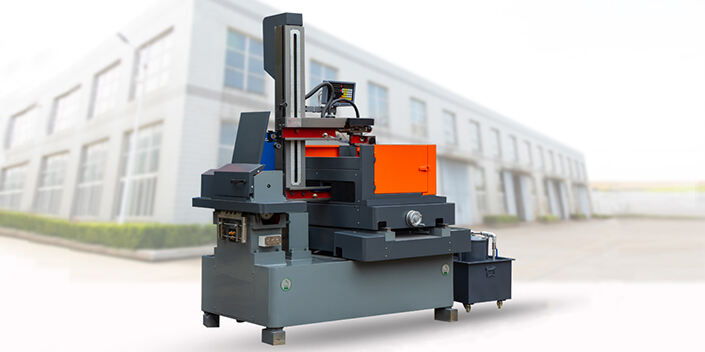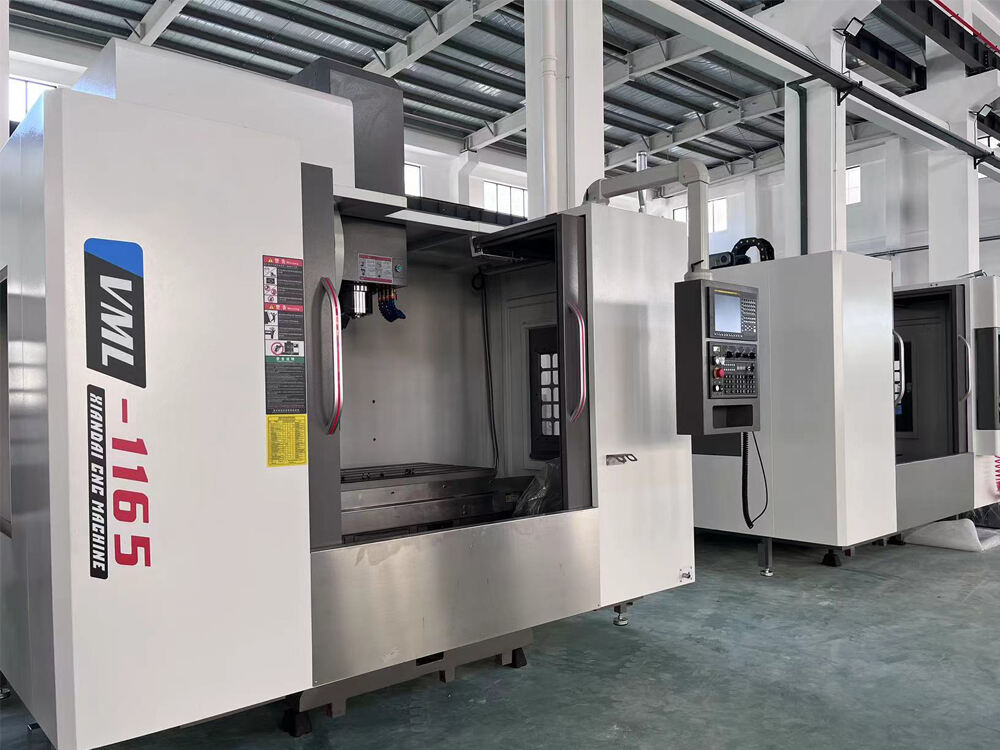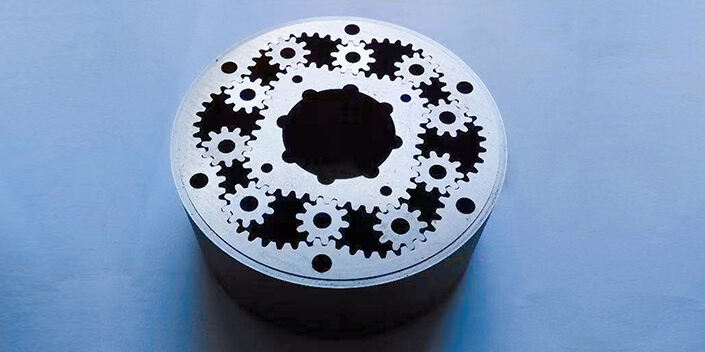Verständnis der Schweißparameter und deren Einfluss auf die Röhrenqualität
Schweißparameter spielen eine entscheidende Rolle bei der Bestimmung der Eigenschaften und Qualität eines Schweisses, insbesondere bei der Röhrenschiesserei. Schlüsselvariablen wie Spannung, Stromstärke, Fahrgeschwindigkeit und Elektrodenwinkel sind von zentraler Bedeutung. Diese Faktoren bestimmen die Eigenschaften des Schweisses und beeinflussen Aspekte wie Eindringtiefe und Bogenstabilität, die essenziell für die Sicherstellung der Gesamtröhrenintegrität sind. Zum Beispiel beeinflusst der Schweißstrom die Eindringtiefe, während der Elektrodenwinkel die Richtung und Konsistenz der Schweissnaht bestimmen kann.
Die tiefe Beziehung zwischen Schweißparametern und Rohrqualität kann nicht genug betont werden. Jede Anpassung dieser Parameter kann sich erheblich auf die Stärke, Korrosionsbeständigkeit und Haltbarkeit des geschweißten Rohrs auswirken. Ein höherer Strom könnte die Stärke erhöhen, aber zu Spritzern führen, wenn er nicht kontrolliert wird, während eine langsamere Elektrodenfahrgeschwindigkeit die Verschmelzung verbessern könnte, aber das Risiko einer Überhitzung und Verformung birgt. Daher ist das Verständnis und die Optimierung dieser Parameter essenziell, da Variationen dramatisch die Fähigkeit des Rohrs beeinflussen können, Umwelteinflüssen standzuhalten und seine Dienstlebensdauer zu verlängern. Dies gilt insbesondere in Anwendungen, die hohe Präzision erfordern, wie bei Drahterosionsmaschinen, wo jede Qualitätsminderung des Rohrs aufgrund suboptimalen Schweißens zu erheblichen Betriebsproblemen führen kann.
Die Rolle des Schweißstroms bei der Rohrqualität
Das Verständnis der Bedeutung von Amperazeinstellungen ist entscheidend, da es direkt auf die Schweißqualität bei der Bearbeitung unterschiedlicher Materialien und Dicken einwirkt. Schweißer müssen sorgfältig den Schweißstrom anpassen, um eine ausreichende Durchdringung und Verschmelzung der Materialien sicherzustellen, was für die tragende Stabilität geschweißter Rohre von entscheidender Bedeutung ist.
Falsche Strompegel können die Qualität der Naht erheblich beeinträchtigen und zu verschiedenen Mängeln wie Unterfressen oder unzureichender Verschmelzung führen. Diese Mängel schwächen die Festigkeit und Haltbarkeit der Rohre. Laut Branchenstatistiken gibt es eine bemerkenswerte 30-prozentige Zunahme von Ausfällen, die auf falsche Amperazeinstellungen zurückzuführen sind. Diese Statistik unterstreicht die Bedeutung einer präzisen Kalibrierung des Schweißstroms, um Mängel zu verhindern und eine hochwertige Rohrherstellung sicherzustellen.
Wie Spannung den Schweißprozess beeinflusst
Die Spannung spielt eine entscheidende Rolle bei der Stabilisierung des Schweißbogens und der Sicherstellung einer ausreichenden Durchdringung. Durch die Steuerung der Bogenlänge wirkt sich die Spannung direkt auf die Wärmeeingabe während des Schweißprozesses aus, was wiederum die Form der Schweißnaht beeinflusst. Ein stabiler Bogen ermöglicht eine konsistente Nahtbildung und optimale Durchdringung des Materials, was die Gesamtqualität der Schweißverbindung verbessert.
Falsch eingestellte Spannungen können jedoch zu erheblichen Problemen führen. Eine zu hohe Spannung führt oft zu vermehrtem Spritzverhalten, was nicht nur verschwenderisch ist, sondern auch die Sauberkeit der Schweißnaht beeinträchtigt. Zudem können hohe Spannungseinstellungen zu Unterfuhren führen, was zu schwächeren Verbindungen führt. Umgekehrt kann eine zu niedrige Spannung zu unzureichender Durchdringung und unregelmäßiger Nahtausrundung führen. Studien haben ergeben, dass nahezu 40 % der Schweißfehler auf eine fehlerhafte Spannungssteuerung zurückzuführen sind, was die Bedeutung präziser Spannungssteuerung für zuverlässige Schweißverbindungen unterstreicht.
Fertigungsgeschwindigkeit: Effizienz und Qualität im Gleichgewicht
Die Optimierung der Fahrgeschwindigkeit ist entscheidend für die Gewährleistung von Effizienz und hochwertigen Schweißergebnissen. Jedes Material weist eigene Charakteristiken auf, die spezifische Fahrensgeschwindigkeiten erfordern, um eine optimale Verschmelzung zu erreichen und Mängel zu minimieren. Zum Beispiel könnte Aluminium eine andere Fahrensgeschwindigkeit im Vergleich zu Edelstahl benötigen, um Probleme wie Risse oder unzureichende Verschmelzung zu vermeiden.
Die Geschwindigkeit, mit der der Schweißprozess fortschreitet, beeinflusst erheblich die Wärmeeingabe, einen entscheidenden Faktor bei der Bestimmung der Schweißqualität. Eine langsamere Geschwindigkeit kann zu einer übermäßigen Wärmezufuhr führen, was zu Problemen wie Überhitzung und Verformung des Materials führen kann. Andererseits kann ein zu schnelles Vorgehen beim Schweißen zu unzureichender Durchdringung führen, was zu schwachen Schweißnähten führt. Das Ausbalancieren dieses Aspekts sichert die Integrität und Haltbarkeit der Schweißnaht, wodurch die Leistungsfähigkeit des Endprodukts optimiert wird. Eine solche Detailgenauigkeit ist in Prozessen von entscheidender Bedeutung, die auf Präzision und Zuverlässigkeit basieren, ähnlich wie bei Prozessen, die eine EDM-Spark-Erosionsmaschine oder eine Draht-EDM-Maschine verwenden, wo Präzision essenziell ist.
Elektrodenwinkel und seine Rolle beim Schweißen
Die Korrektur des Elektrodenwinkels ist entscheidend für eine bessere Verschmelzung und Penetration in das Basismaterial. Eine richtig ausgerichtete Elektrode verbessert die Bogenstabilität und gewährleistet eine konsistente Schweißnahtform. Diese Stabilität trägt zur Aufrechterhaltung von hochwertigen Schweissen bei, was in verschiedenen Fertigungsprozessen, die drahtförmige EDM-Maschinen und andere ähnliche Technologien einsetzen, essenziell ist.
Im Gegensatz dazu können unangemessene Elektrodenwinkel zu erheblichen Schweißfehlern führen, was sowohl das Erscheinungsbild als auch die tragende Fähigkeit der Naht negativ beeinflusst. So weisen Branchenexperten darauf hin, dass eine Fehljustierung des Elektrodenwinkels die Schweißfestigkeit um bis zu 25 % verringern kann, was möglicherweise die gesamte Struktur gefährdet. Daher geht es bei der Einhaltung des richtigen Winkels nicht nur um Ästhetik; es ist ein entscheidender Faktor, der zur Gesamthaltbarkeit und Zuverlässigkeit geschweißter Konstruktionen beiträgt. Unabhängig davon, ob Sie mit EDM-Spark-Erosionsmaschinen oder traditionellen Schweißanlagen arbeiten, ist das Verständnis und die Anwendung des richtigen Elektrodenwinkels ein wesentlicher Bestandteil des Schweißprozesses.
Einfluss der Schutzgasflussrate auf die Schweißintegrität
Das Einhalten der notwendigen Schutzgaskennwerte ist entscheidend für die Erhaltung der Schweissintegrität. Ohne angemessenen Gasfluss ist der Schweißanschlag anfällig für Verschmutzungen durch atmosphärische Elemente, was zu einer beeinträchtigten Strukturqualität führt. Wesentlich ist es, die Belüftung des Schmelzbeckens vor diesen Elementen zu schützen, da sie zu Fehlern führen können. Dies unterstreicht die Notwendigkeit präziser Flussregelung während des Schweißvorgangs, um sicherzustellen, dass diese Verunreinigungen ferngehalten werden.
Die Gefahren eines unzureichenden Gasschutzes sind erheblich, einschließlich Oxidation und Porosität. Diese Mängel beeinträchtigen nicht nur die ästhetische Qualität der Naht, sondern auch deren Haltbarkeit und Stärke. Laut Branchenberichten führt ein unzureichender Schutzgasabfluss oft zu erhöhten Reparaturkosten, die auf etwa 20 % geschätzt werden. Solche finanziellen Auswirkungen betonen die Bedeutung einer optimalen Schutzgasflussregelung, um diese kostspieligen Mängel zu verhindern und so die Schweißqualität und -Haltbarkeit zu gewährleisten.
Ausbildung der Arbeitskräfte: Wesentliche Fähigkeiten für qualitativ hochwertiges Schweißen
Die Bedeutung von qualifizierten Schweißern in der Industrie ist entscheidend für die Einhaltung hoher Qualitätsstandards. Angemessen ausgebildete Arbeiter können effektiv den richtigen Schweißparametern folgen, was die Qualität und Sicherheit von geschweißten Produkten gewährleistet. Qualifizierte Schweißer minimieren potenzielle Fehler und senken Reparaturkosten, was ihre Rolle in Projekten mit fortgeschrittenen Maschinentechologien wie Draht-EDM-Maschinen und EDM-Spark-Erosionsmaschinen besonders wichtig macht.
Ausbildungsmethoden für Schweißer umfassen oft eine Kombination aus praktischen Workshops, Simulationen und detaillierten Lehrprogrammen. Diese Ansätze sind darauf ausgelegt, sowohl das theoretische Verständnis als auch die praktischen Fähigkeiten zu verbessern, die für eine optimale Schweißleistung notwendig sind. Zum Beispiel bieten Workshops reale Erfahrungen, während Simulationen das Experimentieren mit verschiedenen Szenarien ermöglichen, ohne das Risiko tatsächlicher Fehler. Eine solche umfassende Ausbildung stellt sicher, dass Schweißer gut gerüstet sind, um verschiedene Aufgaben zu meistern, von grundlegendem Schweißen bis hin zum Betreiben komplexer Maschinen wie Wasserstrahlschneidmaschinen, wodurch die Branchenstandards gewahrt bleiben.
Table of Contents
- Verständnis der Schweißparameter und deren Einfluss auf die Röhrenqualität
- Die Rolle des Schweißstroms bei der Rohrqualität
- Wie Spannung den Schweißprozess beeinflusst
- Fertigungsgeschwindigkeit: Effizienz und Qualität im Gleichgewicht
- Elektrodenwinkel und seine Rolle beim Schweißen
- Einfluss der Schutzgasflussrate auf die Schweißintegrität
- Ausbildung der Arbeitskräfte: Wesentliche Fähigkeiten für qualitativ hochwertiges Schweißen





